© Emanuel Tiberi
Tablas de estado de especie por año
Selecciona el año para desplegar las tablas de estado.
2021
CITA ESTADO DE CONSERVACIÓN (criterios IUCN) GLOBAL Preocupación menor (LC), 2018 1 REGIONAL – Mar Patagónico Preocupación menor (LC), 2016 9 Argentina Preocupación menor (LC), 2015 2 TAMAÑO POBLACIONAL (Parejas reproductivas) Global Desconocido 1 Argentina (sin Islas Malvinas) 55,895 3 a 6 Isla Malvinas No hay colonias 7 Islas del Atlántico Sur (Georgias del Sur y Sandwich del Sur) No hay colonias 7 TENDENCIA POBLACIONAL Global Desconocido 1 Argentina (sin Islas Malvinas) Mixta 3 a 6 Isla Malvinas No hay colonias Islas del Atlántico Sur (Georgias del Sur y Sandwich del Sur) No hay colonias PROTECCIÓN EN ARGENTINA Número de colonias registradas en Argentina 65 3 a 6 Número de colonias protegidas en Argentina 35 3 a 6, 8 Número de colonias con tendencia poblacional creciente 6 3 a 6 Número de colonias con tendencia poblacional decreciente 8 3 a 6 Número de colonias con tendencia poblacional estable 0 3 a 6 Número de colonias con tendencia poblacional desconocida 51 3 a 6
Áreas protegidas con presencia de colonias
- AMP Punta Tombo
- Area Natural Protegida Punta León
- Parque Interjurisdiccional Marino Costero Patagonia Austral
- Monte Loayza / Reserva Asociada Cañadón del Duraznillo
- Reserva Natural Intangible Cabo Blanco
- Parque Interjurisdiccional Marino Isla Pingüino
- Área de Uso Científico Bajo Protección Especial Islas Cormorán y Justicia
- Área de Uso Limitado Bajo Protección Especial Bahía San Julián
- Área de Uso Limitado Bajo Protección Especial Isla Leones
- Parque Nacional Monte León
- Reserva Provincial Isla de Monte León
- Área de Uso Científico Bajo Protección Especial Isla Deseada
- Reserva Natural Silvestre Isla de los Estados y Archipiélago de Año Nuevo
Área marina de uso intenso
- Alimentación en aguas costeras de poca profundidad y aguas profundas, alejadas de la costa (más de 8km).
- Espacios principalmente costeros de las provincias de Chubut, Santa Cruz y Tierra del Fuego, Antártida e
- Islas del Atlántico Sur.
- En invierno algunas poblaciones llegan hasta las costas de la Provincia de Buenos Aires.
Áreas marinas protegidas en áreas de uso intenso
- Area Natural Protegida Península Valdés
- Area Natural Protegida Punta León
- AMP Punta Tombo Marina
- Parque Interjurisdiccional Marino Costero Patagonia Austral
- Parque Natural Provincial Monte Loayza
- Parque Interjurisdiccional Marino Isla Pingüino
- Area de uso limitado bajo protección especial Bahía San Julían
- Parque Interjurisdiccional Marino Makenke
REFERENCIAS:
- BirdLife International. 2018. Leucocarbo atriceps. The IUCN Red List of Threatened Species 2018: e.T22729686A133554713. https://dx.doi.org/10.2305/IUCN.UK.2018-2.RLTS.T22729686A133554713.en
- Ministerio de Ambiente y Desarrollo Sustentable y Aves Argentina, 2017. Categorización de las Aves de la Argentina (2015). Informe del Ministerio de Ambiente y Desarrollo Sustentable de la Nación y de Aves Argentinas, edición electrónica. Buenos Aires, Argentina
- Frere et al 2005, Hornero 20, 35-52
- Yorio et al 1998. Atlas de la distribución reproductiva de aves marinas en el litoral patagónico argentino.
- Ibarra et al 2018, The Wilson Journal of Ornithology 130, 224–234.
- Yorio et al 2020, Austral Ornithology 120, 114–122.
- Kennedy M, Spencer H. 2014. Classification of the Cormorants of the World. Molecular phylogenetics and evolution 79:249–257.
- Base de datos WCS Argentina – Programa Marino
- Falabella et al. 2019. http://marpatagonico.org/publicaciones/

